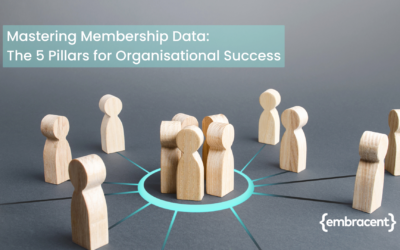

Why is Agility important?
It doesn’t take a genius to realise that the past few months have required most businesses to change course and, to use that terrible consulting phrase, “pivot” to react to the COVID pandemic and the seismic changes in the UK markets and further afield.
In fact, many businesses are still reacting and responding to the changes brought about by the pandemic. Some are reacting faster than others, and some are struggling to react at all.
In the worst cases, some businesses are already going out of business.
The need to rapidly respond, to be Agile, and to changing circumstances has been paramount over the past few months
Be like a boat
If you are racing a speedboat through the crystal-clear waters off the Dorset coast, close to where I am sat as I write this, it’s a lot easier to change direction to avoid turbulence ahead than if you’re the captain of a large super-tanker rumbling across the Atlantic.
In this instance, the speedboat is clearly more Agile than the super-tanker.
However, you wouldn’t necessarily want to be in a speedboat in the middle of the Atlantic, when 20m high waves are crashing against you, the wind is howling at 70mph, and the rain is in danger of sinking your very expensive coastal run-around.
In this instance, Agility may actually not be very beneficial and what you crave is a certain amount of stability.
In their article on Agility, McKinsey make this point well and argue that Agility needs two things:
1. Dynamic capability
the ability to move fast—speed, nimbleness, responsiveness.
2. Stability, a stable foundation
a platform, if you will, of things that don’t change. It’s this stable backbone that becomes a springboard for the company, an anchor point that doesn’t change while a whole bunch of other things are changing constantly
I should say, at this point, that we do not receive any advertising revenue from Sunseeker (but are happy to receive free boat trips!)
The point of course being that what is very useful is the speed and agility of a smaller vessel, but with additional comfort and stability for more ocean-going activities. This idea can be translated very easily into a business context.
Agility and Stability
Further in in their article, McKinsey identify 3 areas to focus on in order to deliver business agility:
1. Be both stable and dynamic
on structure, process, and people: for example, actively think in these two different terms, and provide leadership that consider both almost as separate challenges
2. Identify the key value-adding activities
and decisions end-to-end, all the way to the customer: for example, understand what customers value so that you can take away all the unnecessary activities (building agility) and reinforce the important activities (adding stability)
3. Think about what’s stable and what’s dynamic
when it comes to people: for example, providing key guidance and support over the longer term business direction, and reinforcing core values (adding stability), whist also encouraging a culture to recognise that short term changes are inevitable (encouraging agility)
Whilst this is very good advice, as usual from McKinsey, we would also like to offer some very simple, basic and common-sense activities that you can work on to deliver greater Agility (and stability):
Embracing Technology
Large scale Enterprise Technology can often be extremely complicated, with many legacy systems that have evolved over time. It can hardly be described as Agile.
So how do you make this more agile whilst also improving the underlying stability?

We have identified 9 key steps to help you do this:
1. Understand the value chain
and what’s important to your customers – identify the non-value adding processes and actions and stop anything that you can, or automate tactically if you can’t
2. Build a sensible data view
of what is important and valuable – to give you a very high-level data model of the future
3. Document where key data is located
so that you map the key bits of data to the main systems and applications that create or support it
4. Create an “Abstraction Layer”
between the systems and the data – i.e. move the data out of the individual systems into a separate data layer. This can be done cheaply and effectively using RPA technology
5. Categorise systems
into either a) they definitely do hold key bits of data and/or support key processes, b) they definitely don’t hold key data or support key processes or c) you don’t know whether they hold key bits of data yet
6. Automate or remove the b)’s
as they definitely don’t hold key bits of data, they should be simple to automate, modernise or remove. This removes complexity quickly. Building agility
7. Reinforce the a)’s
as these are critical to the business and need a coherent plan to reinforce them and improve the customer experience. Building stability
8. Look at the unsure c)’s
as these may take some time to investigate and resolve, so requite additional thinking time. Don’t be slowed down by these
9. Repeat
the process from step 1)
Whilst this may sound simplistic, and there is undoubtedly more to making technology agile and stable than mentioned above, we have found that many businesses simply do not have Agile processes and systems.
This is often because they:
a. Lack a steely focus on what customers value.
They don’t really address point 1 above and hang on to things that are not adding value. They constantly add more complexity and change, without taking anything away
b. Look at systems, rather than data.
They focus more on the systems and applications than the data. Data is king, whilst the systems and applications will always change over time
c. Worry about uncertainly
and therefore do nothing. They get bogged down by the Unsure c)’s and spend large amounts of time analysing them before doing anything at all. They don’t deal with the certainty of the a)’s and b)’s fast enough
d. Are ‘old school’ technologists.
They don’t use modern automation and RPA technology to do this. Consequently, system changes take far too long and are far too expensive to deliver Agility in time
If you would like to know more about how to embrace new technology in order to improve the Agility (and stability) of your business, please contact us

Mark Lockton Goddard
Other Interesting Reads
AI for Onboarding: A glimpse at the not-so-distant future for HR Directors
Artificial Intelligence (AI) has experienced a breakthrough year in 2023. But how we embrace AI and Machine Learning (ML) without losing sight of the bigger picture – and how we can be “better together” – is a conversation that we should all be having.
With that in mind, we invite you to see how AI has impacted Santa Clause this year in our short Christmas video.
embracent Christmas Video 2023
Artificial Intelligence (AI) has experienced a breakthrough year in 2023. But how we embrace AI and Machine Learning (ML) without losing sight of the bigger picture – and how we can be “better together” – is a conversation that we should all be having.
With that in mind, we invite you to see how AI has impacted Santa Clause this year in our short Christmas video.
Mastering Membership Data: The Five Pillars for Organisational Success
Explore how understanding members, aligning services, monitoring member activity, optimising internal operations, and tapping into external insights can revolutionise your organisation’s performance.





